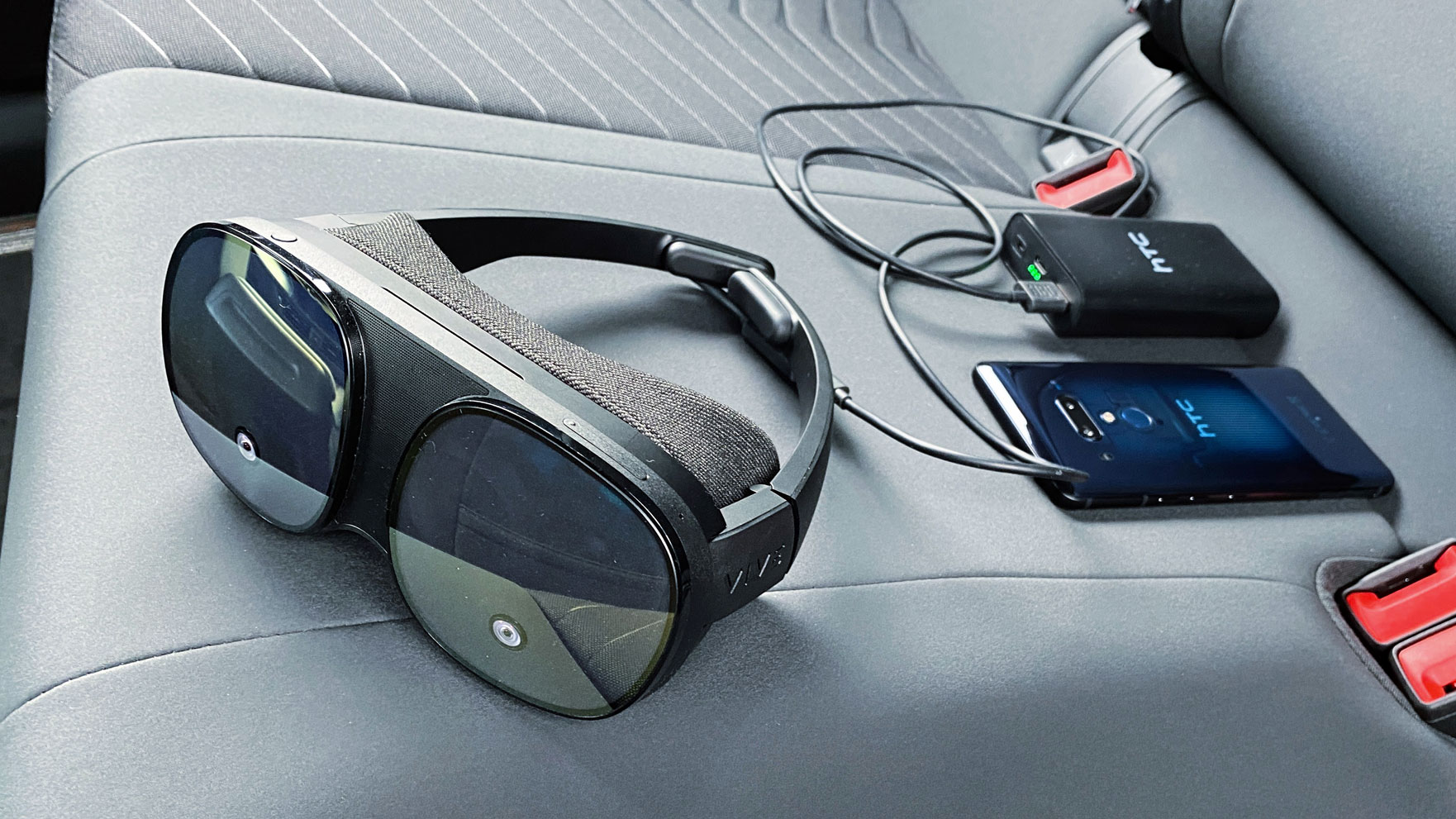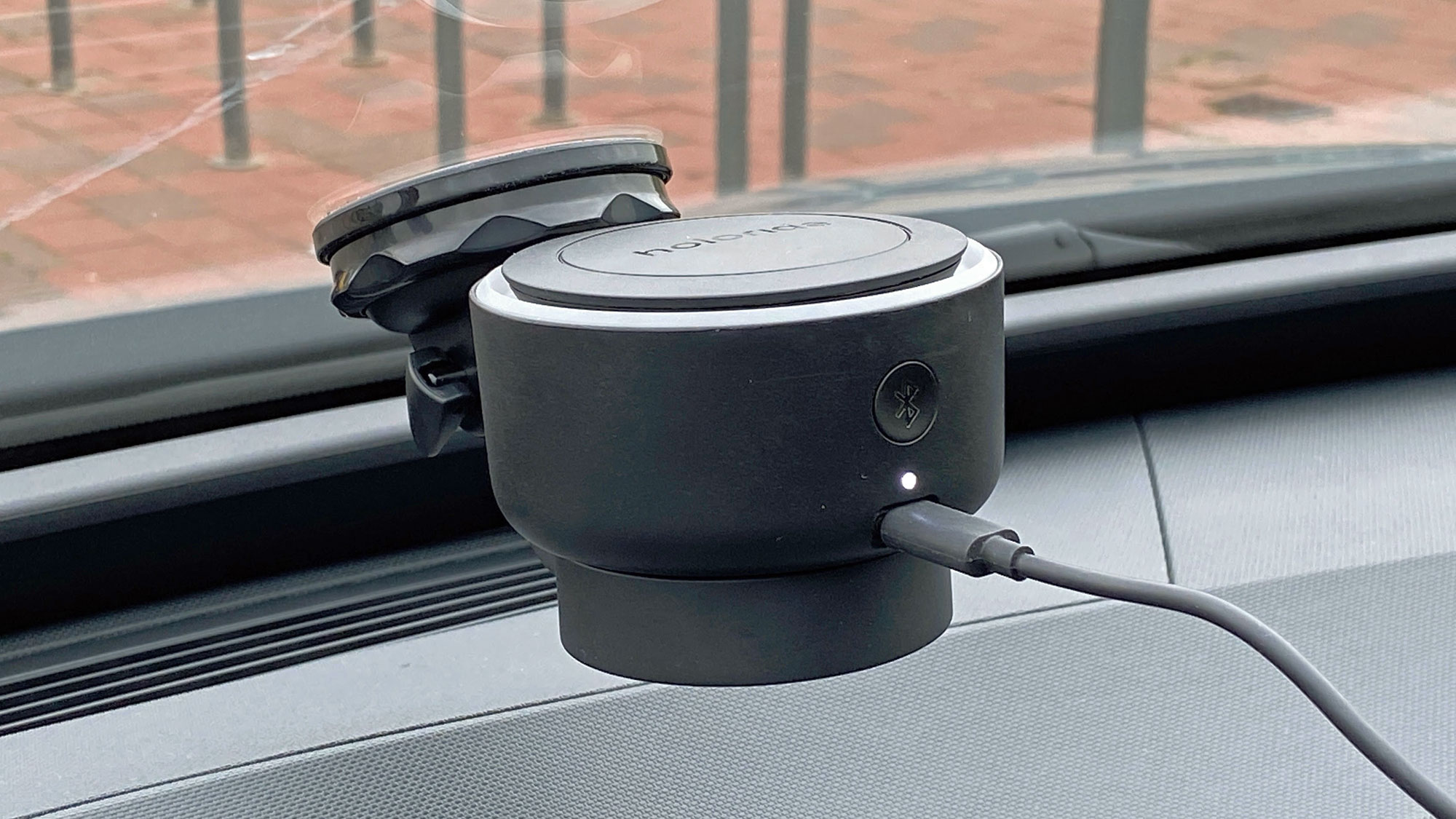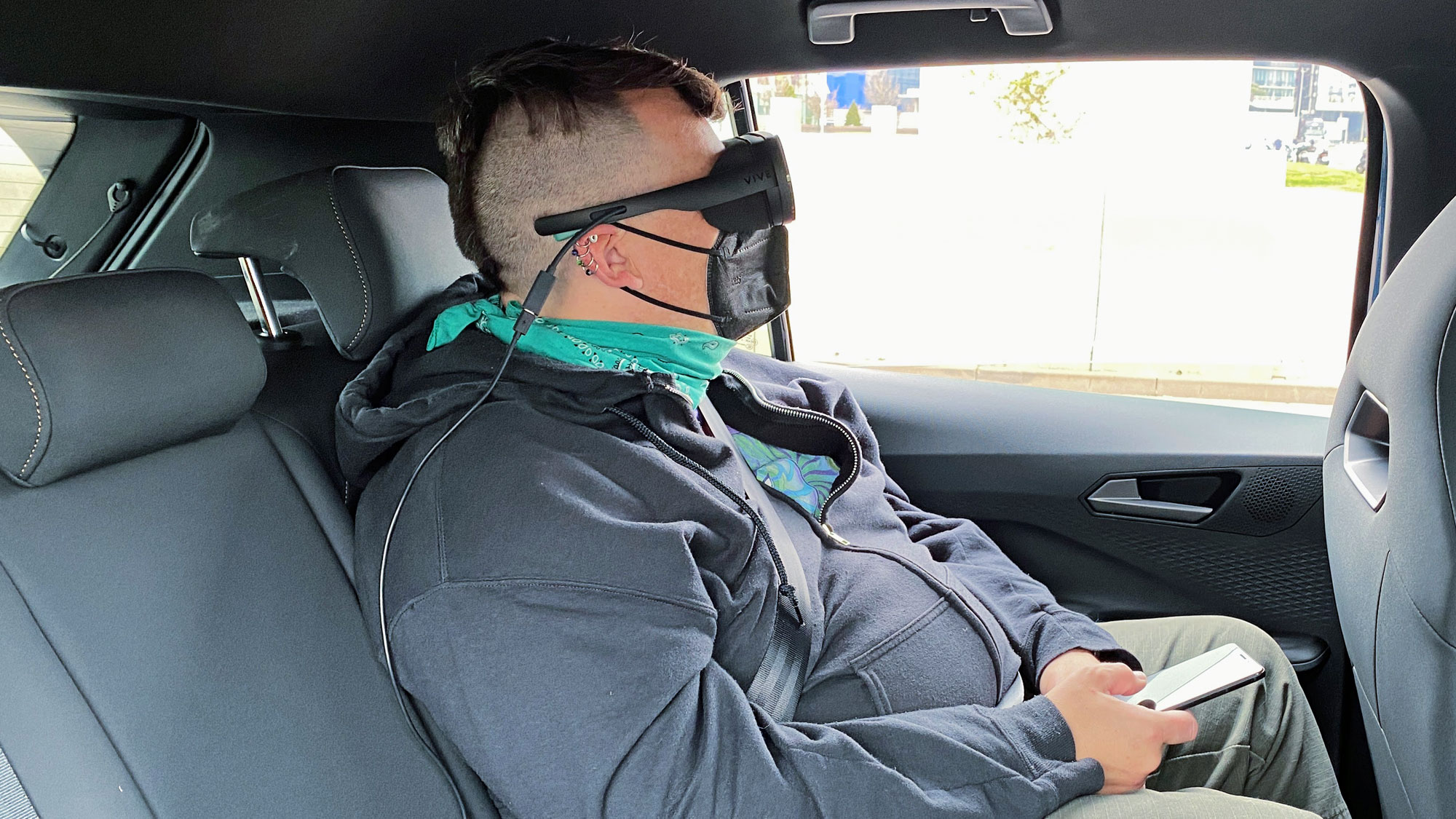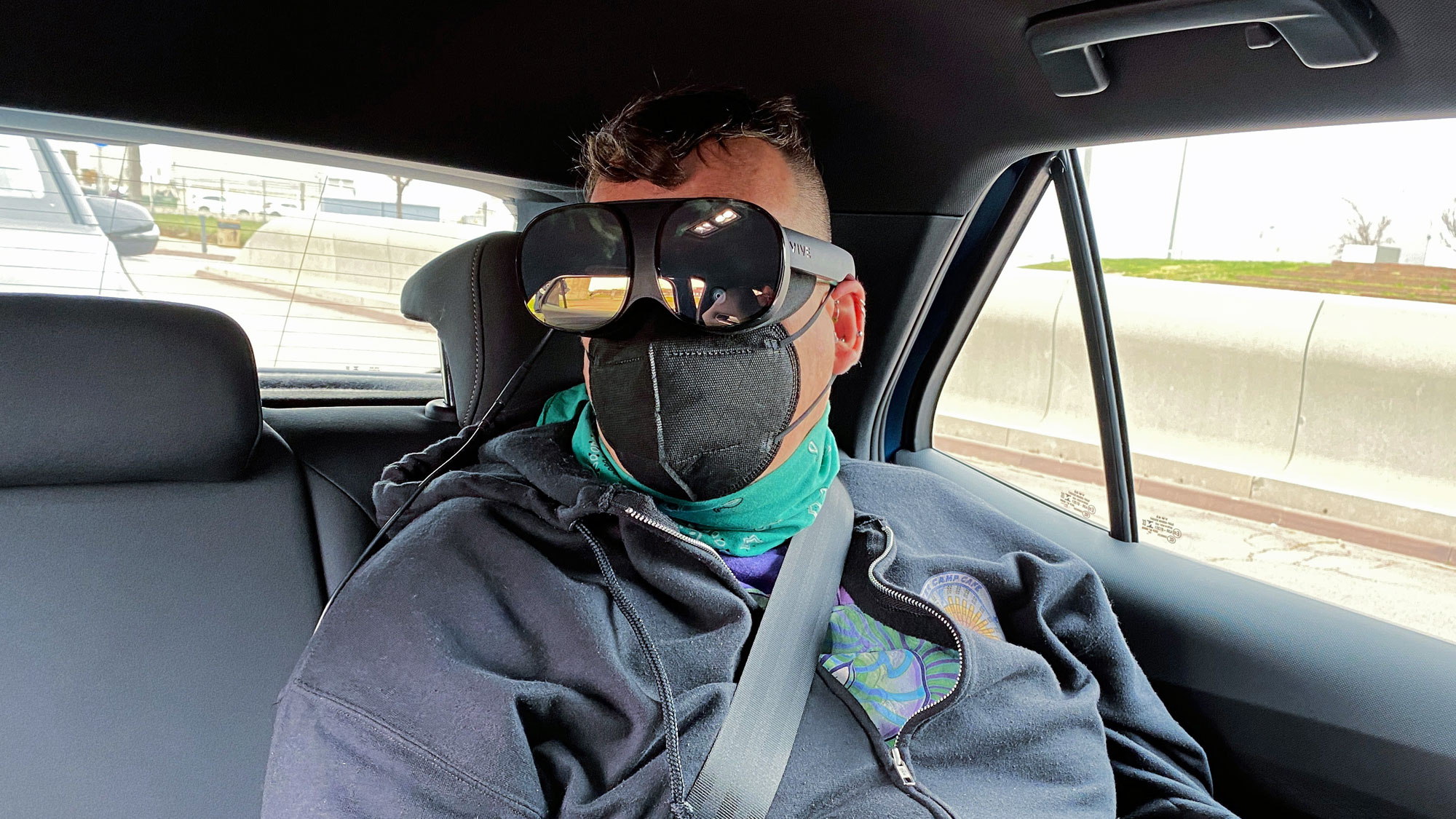What if you could get in a car, put on some VR goggles, and be immersed in a virtual world that's perfectly in sync with the outside world? No motion sickness – just a vast alternate universe ripe for games and entertainment.
That's what holoride promises, and we had a chance to experience it at MWC and SXSW recently. Before we dive into what Holoride looks and feels like, let's discuss the tech behind it.
The VR headset hits the road
In Barcelona, Holoride used a Cupra Born EV (basically Seat's version of the Volkswagen ID.3) for the demo, while in Austin, it used several Audi e-tron and e-tron Sportback EVs.
In both cases, the cars were set up with Holoride's developer kit, an HTC Vive Flow VR headset, and an old HTC U12+ smartphone. For our demo, we sat in the Cupra Born's back seat, buckled up, donned the VR headset, and grabbed the phone.
Since the HTC Vive Flow doesn't come with controllers, the U12+ phone was being used as a simple controller. In the future, you'll just use your own phone with Holoride, and maybe even bring your own VR headset, if you have one – though it might be easier to keep VR headsets in the car.
We wouldn't be surprised if some vehicles start getting bundled with VR headsets (or at least feature VR headset storage) in the next few years.

At MWC, Holoride revealed the HTC Vive Flow is the first Holoride-ready VR headset, while at SXSW, the company announced that Audi will ship the first Holoride-ready cars (A4, A5, A6, A7, A8, Q5, Q7, Q8, e-tron, e-tron Sportback, and e-tron GT) starting June 2022 in the US and Europe (UK and Germany).
Basically, any vehicle with VW Group's third-generation Modular Infotainment Toolkit (MIB 3) will eventually be compatible.
For cars without built-in support, there's the Holoride's developer kit, a hockey-puck sized device which attaches to the front windshield with a suction cup and plugs into a USB port for power.
It features GPS, accelerometers, a gyroscope, a compass, and other sensors that accurately capture the vehicle's data (position, motion, velocity, and acceleration) – plus Bluetooth connectivity to interface with the VR headset and smartphone.

Obviously, in Holoride-ready cars, all of these sensors and the Bluetooth connectivity are built right into the vehicle, for a seamless integration resulting in more accurate data for the Holoride experience.
In fact, most modern cars already incorporate the majority of the hardware needed to become Holoride ready, so we wouldn't be surprised if the company announces more partnerships with other vehicle manufacturers soon.
Two impressive VR experiences
The first Holoride tech demo we tried was a simple, cartoonish game called BeatRider. You're riding on top of a vehicle in a stylized desert-like virtual world.
A cannon tracks your head position, with a reticle that randomly changes colors and always points to where you're looking. Bubbles of various colors appear all around you, and you must shoot only the bubbles matching the current reticle color by tapping the phone's screen.
You'd think that all this visual stimulation and head motion in a moving car would quickly result in motion sickness. But that isn't the case at all.
The motion of the vehicle in the game is accurately synchronized with the motion of the car in the real world, so the virtual world around you delivers visual cues that match what our body is feeling. With such low latency, your brain doesn’t register a disconnect between the two.

The second tech demo we tried was a virtual movie theater. You're sitting in a movie theater watching content on a big screen in front of you, but instead of the theater having walls and a ceiling you see a stylized night-time virtual world around you.
Basically, the entire movie theater moves in sync with the car in the real world, and again, the virtual world around you provides enough peripheral visual cues to prevent motion sickness.
One benefit of this virtual movie theater is that you're looking at a larger virtual screen than anything practical with any infotainment system. A VR headset is likely more affordable, too.
Ultimately, Holoride wants to support a wide variety of standalone VR headsets and a broad range of cars. To this end, the Holoride Elastic SDK abstracts hardware specifics, and lets developers focus on creating experiences using the Unity game engine.
A new kind of in-car entertainment

In all, we were impressed with Holoride's tech demos – especially the low latency between the motion of the car in the real world and the motion of the vehicle in the virtual world, which significantly reduces the opportunity for motion sickness.
As we slowly move towards a future where self-driving cars and even driverless vehicles become the norm, Holoride presents an opportunity for a radical new kind of immersive in-car entertainment.
Having a virtual world that's hundreds of miles or kilometers in size opens up a whole new universe of VR experiences that simply aren't possible when wearing a VR headset within the confines of our homes. And that's what makes Holoride so appealing to developers as well as both VR headset and car manufacturers.
To that end, the company's already partnered with content studios like Mackevision, Rewind, and Schell Games.
So, who knows? Perhaps in a few years your Uber ride might not be quite as boring, and your annual family road trip might be less stressful as you wear the latest generation of ultralight VR (or AR) headset and enjoy a whole new form of in-car entertainment. We're game!
Source: TechRadar